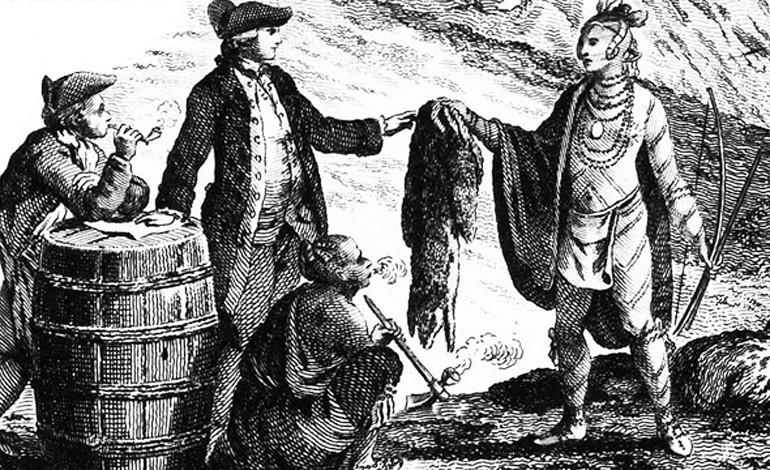
During the first part of the nineteenth century, the fur trade continued to be one of the important economic engines in North America. Driven in large part by European fashion, beaver pelts had great value. Traders obtained the pelts from Indians using goods such as blankets, guns, beads, knives, whiskey, tobacco and other items as trade goods.
Gift-giving and ceremonial exchange were important elements in trading with Indians: traders soon found that if they didn’t participate in the ceremonies and provide the Indians with gifts that the Indians wouldn’t trade with them. In general, the “Opening Trade Ceremonies” began with the traders dispensing “high wine” or “Indian rum” (a diluted alcohol). Next would come the passing of the pipe which would be accompanied by speeches.
By 1816, the fur and hide trade in North America was dominated by three groups: (1) the Hudson’s Bay Company (HBC) which had been founded in 1670 and was controlled by investors in London; (2) the North West Company (Nor’westers) which had been founded in 1776 by a group of traders in Montreal; and (3) a number of smaller American fur companies, often short-lived, which generally traded out of St. Louis.
The Columbia River Basin—an area which includes much of the present-day states of Washington, Oregon, and Idaho—was claimed by both the Britain and the United States. In 1811, John Jacob Astor’s Pacific Fur Company had established Fort Astoria near the mouth of the Columbia River with the intention of controlling the region’s fur trade. In 1813, however, with war waging between the United States and Britain, the Nor’westers acquired the holdings of the Pacific Fur Company. In 1816, what had been Fort Astoria was now Fort George.
Originally, the fur trade centered on Indians trapping and preparing the furs. The Indians would then trade them for European goods. By 1816, however, the fur trade companies were more frequently using their own trappers and trading with the Indians primarily for horses and food supplies.
Donald McKenzie was appointed the leader of the North West Company’s new Columbia Department. While the company had traditionally gone into Indian country and opened posts for Indian trade, McKenzie decided to change this approach. Geographer John Allen, in one of his chapters in North American Exploration. Volume 3: A Continent Comprehended, reports:
“McKenzie, however, concluded that the fur trade could be made more profitable by eliminating the middlemen, that is, the Indians. Instead of building posts for trading purposes, the North West Company decided to trap rather than trade.”
As a result, large numbers of non-Indian trappers—French-Canadian, American, English, Hawaiian—began to invade Indian country. Also included in the trapping brigades were a number of Iroquois.
In Montana, Iroquois leader Big Ignace and a number of his people settled among the Flathead who welcomed these well-armed reinforcements in their clashes with the Blackfoot. Historian Larry Cebula, in his book Plateau Indians and the Quest for Spiritual Power, 1700-1850, writes:
“The Iroquois taught the Flatheads at least some of the outward forms of Catholicism, including the sign of the cross, morning and evening prayers, baptism, marking graves with a cross, and Sabbath day—which the Iroquois marked by raising a flag, as they had seen white traders do.”
Some of these new religious elements diffused to other neighboring tribes.
In Washington, the North West Company established Fort Nez Perce at the confluence of the Snake and Columbia Rivers to establish trade with the Nez Perce, Cayuse, Walla Walla, and Palouse.
In New Mexico, fur traders operating out of Taos adopted a strategy of trapping rather than trading. Geographer John Allen reports:
“Rather than seeking Indian tribes with whom they could trade for furs, they themselves trapped the beaver—in the rich valleys of the Sangre de Cristo, San Juan, and other ranges of the southern Rockies—and then returned to Santa Fe, where they sold the furs to merchants who had crossed the Santa Fe Trail from St. Louis.”
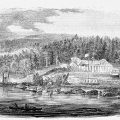
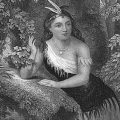
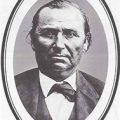
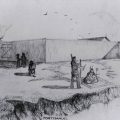
Leave a Reply